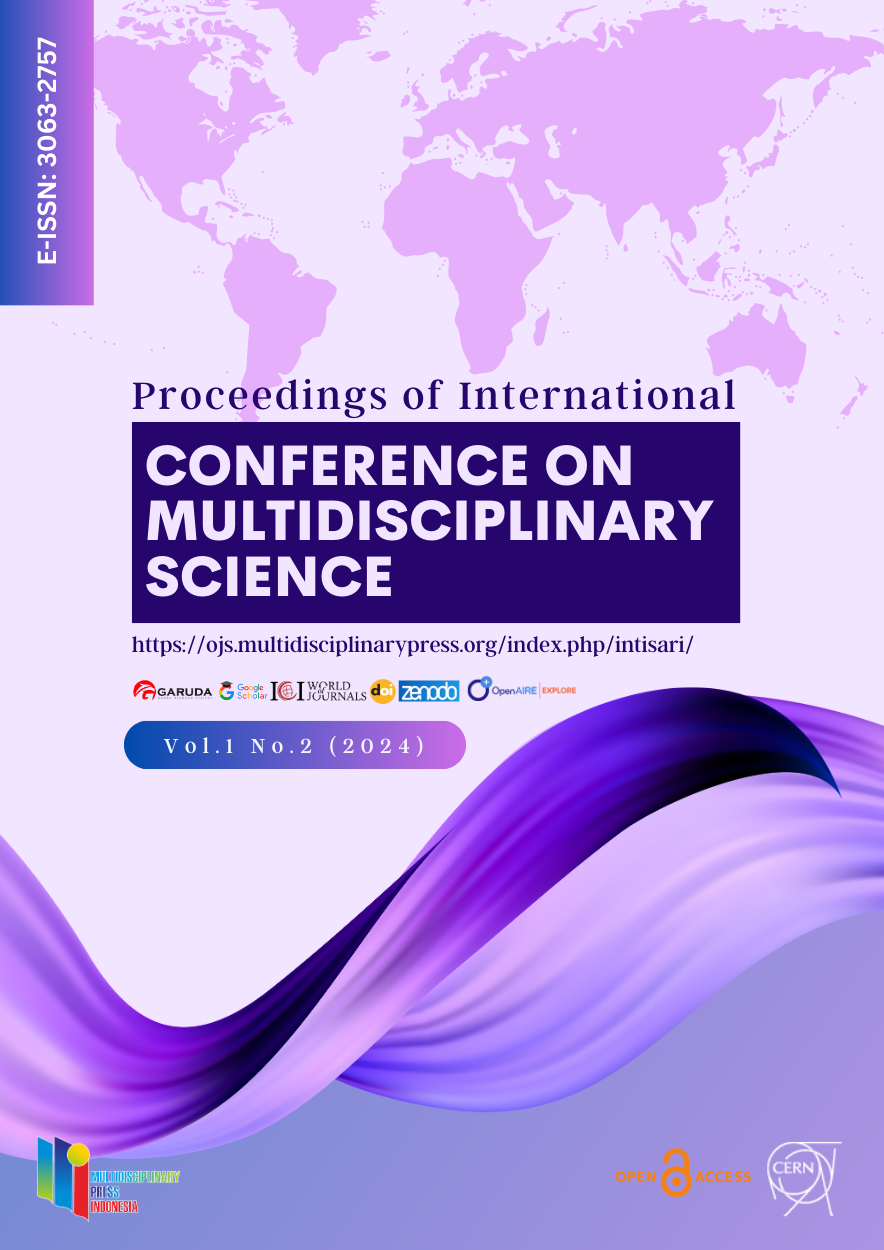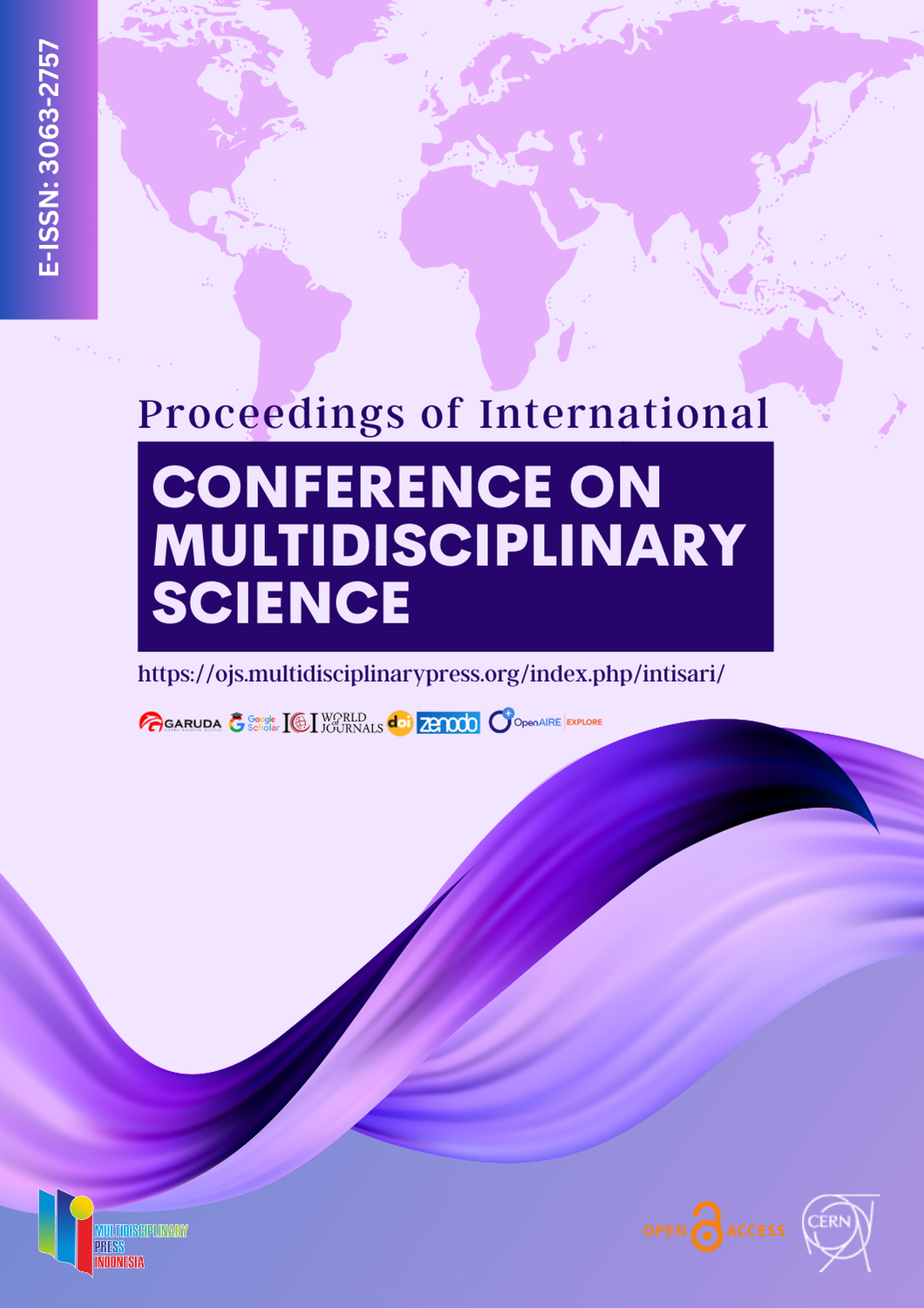Optimizing Work Performance
Keywords:
Job Stress, Organizational Culture, Organizational Commitment, Job PerformanceAbstract
Employees are not just resources, but rather capital or assets for institutions or organizations. Because of this, a new term emerged outside of human resources, namely human capital. Here human resources are seen not just as the main asset, but an asset that is valuable and can be multiplied, developed (compared with an investment portfolio) and not vice versa as a liability (expense). Here the perspective of human resources as an investment for institutions or organizations is more prominent. The results of this research are as follows: Organizational Culture has a positive and significant effect on Organizational Commitment with a value of 0.518 and a significant value of 0.000. Organizational Culture has a positive and significant effect on Work Performance with a value of 0.195 and a significant value of 0.035. Organizational Commitment has a positive and significant effect on Job Performance with a value of 0.554 and a significant 0.000. Job Stress has a negative and significant effect on Organizational Commitment with a value of -0.412 and a significant value of 0.000. Job Stress has a negative and significant effect on Job Performance with a value of -0.211 and a significant value of 0.036. Organizational culture has a positive and significant effect on work performance through organizational commitment with a value of 0.287 and a significant value of 0.000. Job Stress has a negative and significant effect on Job Performance through Organizational Commitment with a value of -0.228 and a significant value of 0.001.
Downloads
References
Badriyah, M. (2018). Manajemen Sumber Daya Manusia, Cetakan 1. Bandung: CV Pustaka Setia.
Edy Sutrisno. 2018. Manajemen Sumber Daya Manusia. Edisi Pertama. Cetakan Kedua. Kencana Prenada Group. Jakarta.
Edy Sutrisno, (2019). Manajemen Sumber Daya Manusia. Cetak ke sebelas. Prananda Media Group, Jakarta.
Ghozali, I. 2012. Partial Least Square : Konsep, Teknik dan Aplikasi Smart PLS 2.0 M3. Semarang: Badan Penerbit Universitas Diponegoro.
Handaru, A.W., Rahman, N.F., & Parimita, W. (2021). Pengaruh Job Insecurity Dan Komitmen Organisasi Terhadap Turnover Intention Pada Karyawan Industri Manufaktur (Automotive Dan Metal Part). JRMSI - Jurnal Riset Manajemen Sains Indonesia, 12(1), 15-39.
Hari sulaksono. 2019. Budaya organisasi dan kinerja. Sleman: Deepublish.
Hendrayadi Suryani, 2015. Metode Riset Kuantitatif, Teori, Dan Aplikasi Pada Penelitian Bidang Manajemen Dan Ekonomi Islam, Jakarta: Prenada Media, Hal. 109
Idrus, A. (2022). Komitmen. Tasikmalaya: Perkumpulan Rumah Cemerlang Indonesia.
Mathis, R. L., and J. H. Jackson. 2016. Human Resource Management. Edisi 10 Jilid 3. Salemba Empat. Jakarta.
Mowday, R. T., Porter, L. W., & Steers, R. M. (2013). Employee—organization linkages: The psychology of commitment, absenteeism, and turnover. Academic press.
Oemar, Usailan dan Leo Gangga. 2017. Pengaruh Stres Kerja Terhadap Kinerja Pegawai Pada Dinas Pendapatan, Keuangan dan Aset Daerah Kabupaten Musi Manyuasin. Jurnal Ecoment Global. Jilid 2. 2017.
Zainal, Veithzal Rivai, dkk. 2014. Manajemen Sumber Daya Manusia Untuk Perusahaan Dari Teori Ke Praktik. Depok. PT Rajagrafindo Persada.
Downloads
Published
How to Cite
Issue
Section
Categories
License
Copyright (c) 2024 Dadang Fahruzi Ritonga, Muhammad Isa Indrawan

This work is licensed under a Creative Commons Attribution 4.0 International License.





